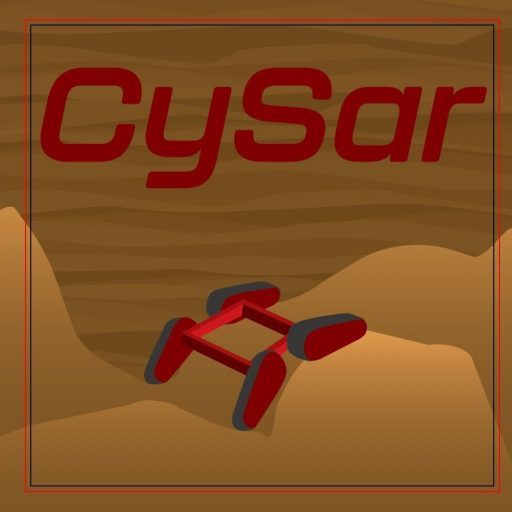Mission Statement
CySaR’s mission is to bring out creative solutions to a robotics field that directly affects the rescue of people in disaster scenarios. In addition to this, we’ll use the platform of Robocup Rescue to get exposure to robotics and multiple prototyping skills such as additive/subtractive manufacturing, electrical circuits, programming, etc.
Project Goals/Deliverables S23
Constructed Chassis with 4 Rigidly Connected Flippers on Parallel Sides
The Robot is able to be Operated Using Internal Batteries for at Least 10 Minutes Under Load
Treads are able to Spin ±5 Revolutions when given a Command from the Onboard Integrated Control System
Constructed Arm with at least 4 Degrees of Freedom
Spring 23' Progress Report
For the Spring semester, we’ve moved smoothly through our deliverables and goals. We’ve completed our first deliverable of having a constructed chassis with 4 rigidly connected flippers on parallel sides. We’ve gotten a lot of progress on the 3rd deliverable of controlling the robot through the onboard integrated control system, the only thing left to do is to put the software onto the Jetson Nano, our onboard computer. As for operating using the internal batteries, we ran into a problem with our current batteries, as they provide too much voltage, overvolting our motor controllers and thus stopping them from working. To remedy this, we ordered new batteries (4 cell, 14.8v nominal) to better cater to our motor controllers; once they arrive we should be able to complete that deliverable as we have everything wired correctly. Our fourth deliverable is to construct an arm with 4 degrees of freedom, this means to have 4 rotation or movement points on the arm. We’ve made steady progress, after completely redesigning from the previous semester. So far we have a complete CAD model and shoulder joint completed. Right now we’re waiting for 3d prints and orders to come in, so that we can mount and secure the remaining degrees of freedom for the arm.
In addition to our deliverables, we’re also working towards having a GUI for the operator of the robot to view. This will include showing controller inputs as well as Cameras, which is another goal we’re working towards(mounting and powering). So far we’ve made great headway, hopefully finalizing our camera mounts and power supply by the end of the semester. As for the GUI, we’ve recently been able to view cameras, which has been a huge breakthrough. We’re expecting to be able to show off all of our deliverables as well as our GUI at the Expo in early May.
Project Goals/Deliverables F22
- Setup
ROS 1 NoeticROS 2 Foxy on Ubuntu 20.04 and be able to run and test a basic ROS program. - Setup base station with WiFi communications to onboard computer to be able to send/receive some kind of information.
- Have a working prototype of a robot flipper that is able to rotate +-90 degrees and move a tread five revolutions
- Have a completed CAD model of the robot chassis with accurate dimensions and documentation.
Fall 22' Progress Report
Our goals for the semester(as seen above) have been moving along smoothly. We’ve completed a full CAD mock-up of the robot complete with accurate dimensions and documentation and additionally are on the way to having a prototype of the flipper attached to a frame of the chassis. Additionally, we’re in the process of setting up a WiFi connection with the onboard computer. We’ve updated our first deliverable to account for a newer version of ROS, ROS 2 Foxy. This version has been installed on Ubuntu and is able to run a basic ROS program.
In addition to our deliverables that we’ve set out to achieve, we’re currently working on developing a manipulator or arm for the robot. To do this, we’re working with open source files to prototype and then augment as needed. We’ve also added a camera system to the robot with one forward facing and one downward facing camera. Right now, we’re planning on communicating with the robot in competition with an ethernet cable as it’s allowed by the league and will undoubtably be the fastest way to send and receive crucial data.
